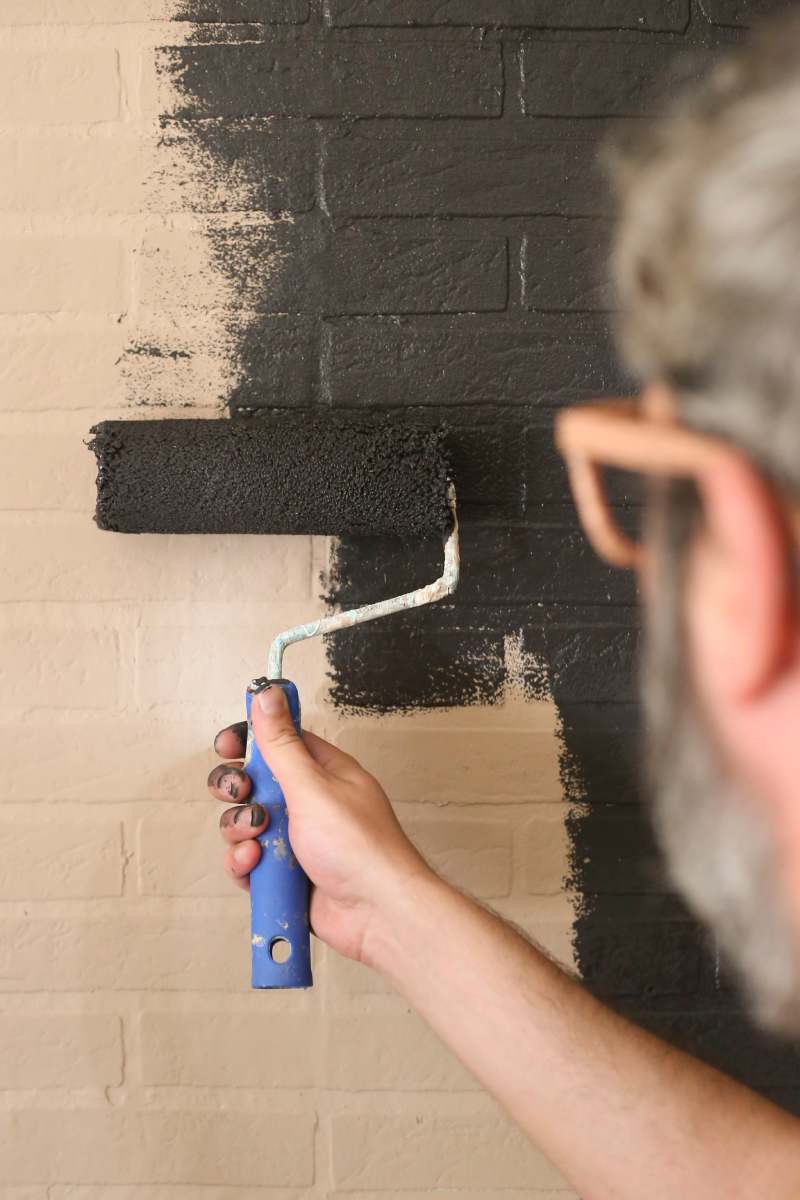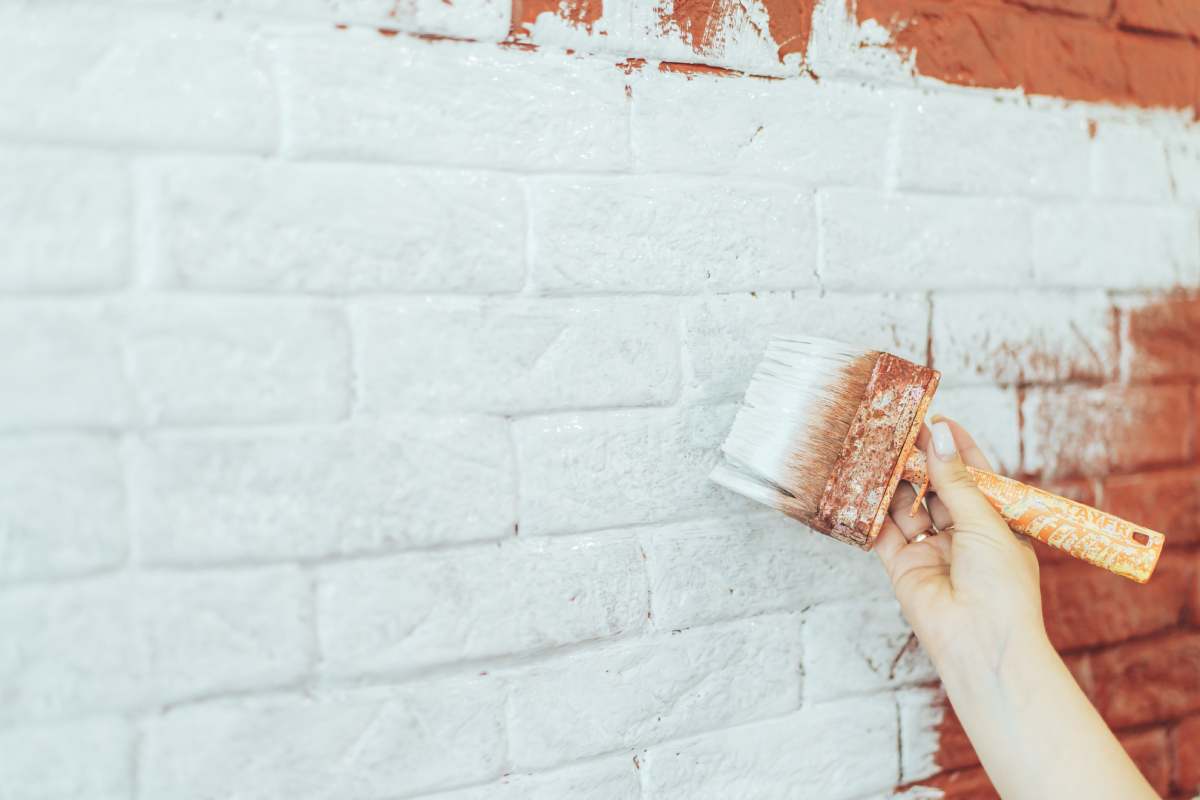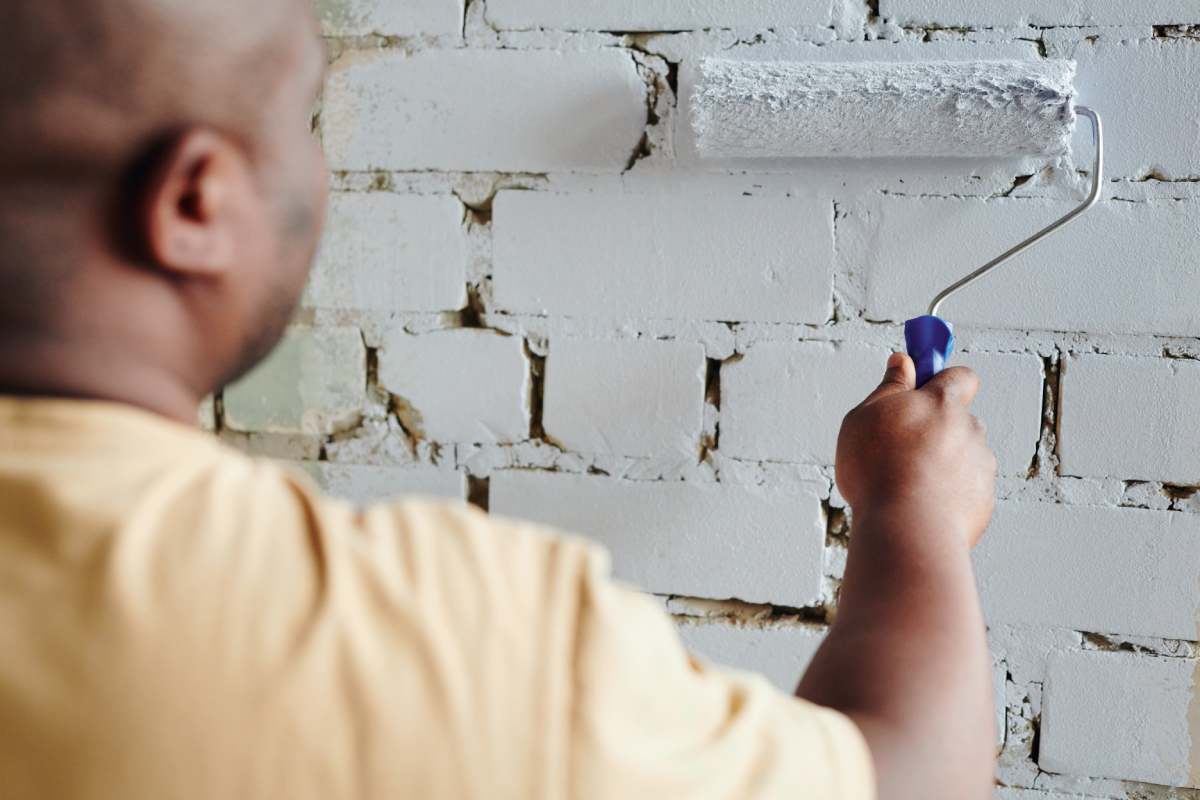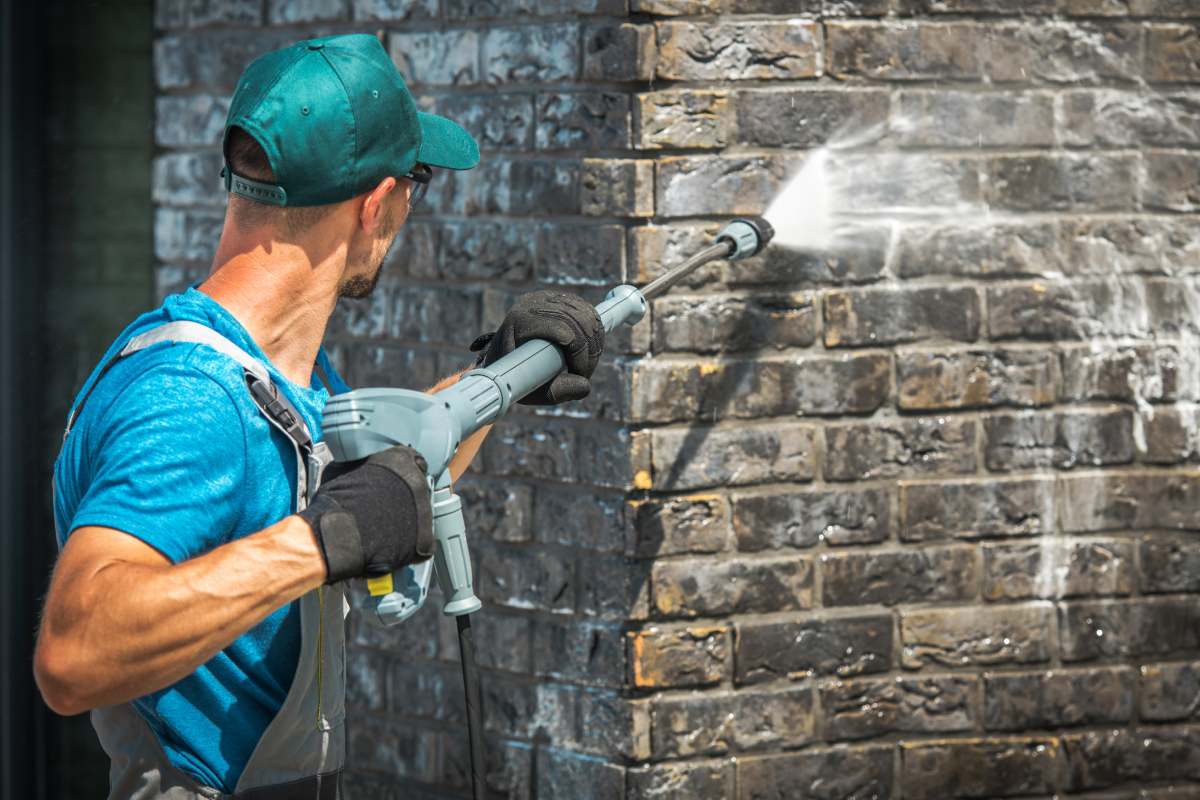After laying brick or getting the brick house inspection, you might want to change the house into your style and at that point, you might wonder, can you paint over the brick?
Painting a brick house can be a transformative project, breathing new life into a weathered exterior or updating the aesthetic of your home. While brick is durable and long-lasting, painting it requires careful preparation and the right materials to ensure a successful outcome.
In this guide, we’ll explore the detailed steps needed to prepare your brick house for painting, the factors that influence how long the paint will last, and essential maintenance tips to prolong the beauty and integrity of your painted brick surface.
Can you paint directly over brick?
Why Paint Brick?
Painting brick can refresh the look of a space, whether it’s the exterior of your house, a fireplace, or an interior wall. It offers a chance to update and modernize the appearance without replacing the brick entirely. However, painted brick requires maintenance and can change the brick’s natural moisture-wicking properties.
Preparing the Brick
- Clean the Brick Thoroughly:
- Dirt, dust, and grime accumulate on brick surfaces over time. Use a stiff-bristle brush or a power washer to clean the brick. For interior brick, a brush and a vacuum can work.
- For tough stains or mildew, a mixture of water and mild detergent or trisodium phosphate (TSP) can be effective. Rinse thoroughly with clean water and let it dry completely.
- Repair Any Damage:
- Inspect the brick and mortar for cracks or damage. Fill small cracks with acrylic caulk. For larger repairs, use mortar or a patching compound suitable for masonry.
- Allow the repairs to dry according to the manufacturer’s instructions.
- Ensure Dryness:
- The brick must be completely dry before painting. Moisture in the brick can prevent paint from adhering properly and may cause peeling or bubbling later on.
Priming the Brick
- Choose the Right Primer:
- Use a high-quality masonry primer designed for porous surfaces like brick. Primers help paint adhere better and create a uniform surface.
- Apply the primer using a roller for larger areas and a brush for edges and corners. Ensure even coverage, filling all the nooks and crannies of the brick and mortar.
- Allow the primer to dry completely, following the product’s drying time guidelines.
Painting the Brick
- Select the Right Paint:
- Use a latex paint designed for masonry. This type of paint is flexible and breathable, allowing moisture to escape and preventing potential damage.
- For exterior brick, choose a paint rated for outdoor use to withstand weather conditions.
- Apply the Paint:
- Like the primer, use a roller for broad surfaces and a brush for detailed areas. Apply at least two coats for even coverage, allowing each coat to dry fully before applying the next.
- For a more rustic look, a single coat might suffice, allowing some of the brick’s texture and colour to show through.
Maintenance and Care
- Regular Inspections:
- Periodically check the painted brick for signs of wear or damage. Promptly address any issues to prevent further deterioration.
- Touch-ups and Cleaning:
- Touch up areas where paint has chipped or worn away. Clean the painted brick with a gentle detergent and water, avoiding harsh chemicals that could damage the paint.
Considerations
- Reversibility:
- Painting brick is a relatively permanent decision. Removing paint from brick is difficult and can damage the brick’s surface. Ensure you’re committed to the change before starting the project.
- Climate Impact:
- In areas with high humidity or frequent freeze-thaw cycles, painted brick can be more prone to moisture problems. Ensure the brick is well-sealed and consider using a breathable masonry paint to mitigate these issues.
Painting brick can transform the look of your home, adding a fresh and modern appeal. By properly preparing the surface, choosing the right materials, and applying the paint carefully, you can achieve a beautiful, long-lasting finish. Remember to consider the long-term implications and maintenance needs before embarking on this project.
How do you prepare a brick house for painting?
Preparing a brick house for painting involves several crucial steps to ensure the paint adheres properly and lasts for years. Here’s a step-by-step guide to help you prepare your brick house for painting:
Step 1: Assess the Condition of the Brick
- Inspect the Brick and Mortar:
- Walk around the house and inspect the brickwork for any damage, cracks, or deteriorating mortar. Repairing these issues is essential before painting.
Step 2: Clean the Brick
- Remove Surface Dirt and Debris:
- Use a stiff-bristle brush to sweep away loose dirt and debris from the brick surface.
- Power Wash the Brick:
- Use a power washer to thoroughly clean the brick. This will remove dirt, grime, and any existing paint or sealant.
- Hold the power washer at a slight angle to avoid damaging the brick or mortar.
- Allow the brick to dry completely, which may take several days depending on the weather conditions.
- Clean with a Detergent Solution:
- For stubborn stains or mildew, mix water with a mild detergent or trisodium phosphate (TSP).
- Scrub the brick with the solution using a stiff-bristle brush.
- Rinse thoroughly with clean water and let it dry completely.
Step 3: Repair the Brick and Mortar
- Fix Cracks and Gaps:
- Fill small cracks in the brick with acrylic caulk.
- For larger cracks and damaged mortar joints, use a mortar repair compound or repoint the mortar.
- Allow all repairs to dry and cure as per the manufacturer’s instructions.
Step 4: Mask and Protect Surrounding Areas
- Cover Windows and Doors:
- Use painter’s tape and plastic sheeting to cover windows, doors, and any other areas you don’t want to paint.
- Lay down drop cloths to protect the ground and surrounding vegetation from paint splatters.
Step 5: Apply a Primer
- Choose the Right Primer:
- Select a high-quality masonry primer designed for porous surfaces like brick. Primers improve paint adhesion and provide a uniform base.
- Ensure the primer is suitable for exterior use if painting the outside of the house.
- Apply the Primer:
- Use a roller for large, flat areas and a brush for edges and detailed sections.
- Ensure the primer is evenly applied, covering all the brick-and-mortar joints.
- Allow the primer to dry completely, following the manufacturer’s drying time guidelines.
Step 6: Paint the Brick
- Select the Right Paint:
- Use a latex or acrylic paint specifically designed for masonry. These paints are breathable and can handle the expansion and contraction of brick.
- Choose an exterior-grade paint for outdoor projects to withstand weather conditions.
- Apply the Paint:
- Apply the first coat of paint using a roller for large areas and a brush for smaller, detailed sections.
- Let the first coat dry completely.
- Apply a second coat for even coverage and a smooth finish.
Step 7: Final Touches
- Remove Protective Coverings:
- Once the paint is completely dry, carefully remove the painter’s tape and plastic sheeting.
- Touch up any areas where the paint may have bled or missed spots.
- Clean Up:
- Clean your brushes, rollers, and any other tools used during the painting process.
Maintenance Tips
- Regular Inspections:
- Periodically inspect the painted brick for any signs of wear or damage. Address issues promptly to maintain the integrity of the paint.
- Cleaning:
- Clean the painted surface with mild detergent and water to remove dirt and mildew, ensuring the paint remains vibrant and intact.
If you’re unsure about how to properly prepare and paint your brick house, consulting with a professional painter like Platinum 3 Painting is advised. They have the expertise and tools to ensure the job is done correctly and efficiently.
How long will paint last on a brick house?
The longevity of paint on a brick house depends on several factors, including the quality of preparation, the type of paint used, the local climate, and how well the paint is maintained. Generally, you can expect the paint on a brick house to last between 5 to 15 years. Here’s a more detailed look at the factors that influence paint durability on brick surfaces:
Factors Influencing Paint Longevity
- Preparation Quality:

- Surface Cleaning: Proper cleaning to remove dirt, mildew, and loose particles ensures better paint adhesion.
- Repairs: Filling cracks and repairing damaged mortar prevents moisture ingress, which can cause paint to peel.
- Priming: Using a high-quality masonry primer helps the paint adhere better and provides a uniform base.
- Type of Paint:
- Masonry Paint: Specialized masonry paints are designed to handle the expansion and contraction of brick. Latex or acrylic paints are flexible and breathable, allowing moisture to escape, which helps in preventing peeling and bubbling.
- Exterior-Grade Paint: For outdoor applications, exterior-grade paints are formulated to withstand weather conditions like rain, UV rays, and temperature fluctuations.
- Local Climate:
- Humidity and Rainfall: High humidity and frequent rainfall can reduce the lifespan of exterior paint by promoting mildew growth and moisture penetration.
- Temperature Extremes: Areas with significant temperature fluctuations can cause the brick and paint to expand and contract, potentially leading to cracking and peeling.
- Sun Exposure: Prolonged exposure to direct sunlight can cause paint to fade and deteriorate faster.
- Maintenance:
- Regular Inspections: Periodic checks for signs of wear, peeling, or damage can help you address issues early and prolong the life of the paint.
- Cleaning: Keeping the painted surface clean from dirt, mildew, and pollutants helps maintain the paint’s appearance and integrity.
- Touch-ups: Promptly touching up areas where the paint has chipped or worn away can prevent further damage and extend the overall lifespan.
Expected Longevity
- High-Quality Preparation and Paint:
- With thorough surface preparation, use of a high-quality primer, and application of top-tier masonry paint, the paint on a brick house can last up to 15 years or more in optimal conditions.
- Moderate Preparation and Paint:
- If the preparation is adequate but not meticulous, and mid-range paint is used, the paint may last around 7-10 years.
- Minimal Preparation and Low-Quality Paint:
- Poor preparation and the use of low-quality paint can result in the paint lasting only 3-5 years before significant issues like peeling and fading arise.
Maintenance Practices
- Annual Cleaning:
- Wash the painted brick annually with a mild detergent solution and a soft brush or sponge to remove dirt and prevent mildew buildup.
- Biannual Inspections:
- Conduct thorough inspections every couple of years to check for signs of peeling, cracking, or other damage. Address any issues promptly.
- Touch-Up Painting:
- Keep some leftover paint for touch-ups to address small areas of damage as soon as they appear.
Conclusion
Painting a brick house is a significant undertaking that can dramatically enhance your home’s appearance and curb appeal. By thoroughly preparing the brick surface, choosing the right type of paint, and performing regular maintenance, you can ensure that the paint lasts for many years.
Understanding the factors that affect paint longevity, such as climate and the quality of preparation, will help you make informed decisions throughout the process. With proper care and attention, your painted brick house can remain vibrant and attractive, providing a fresh, updated look that stands the test of time.










Today, I went to the beach with my children. I found a sea shell and gave it to my 4 year old daughter and said “You can hear the ocean if you put this to your ear.” She put the shell to her ear and screamed. There was a hermit crab inside and it pinched her ear. She never wants to go back! LoL I know this is completely off topic but I had to tell someone!